Sunbeam Motor Car Company Limited was a British motor car manufacturer with its works at Moorfields in Blakenhall, a suburb of Wolverhampton in the county of Staffordshire —now West Midlands. Its Sunbeam name had been registered by John Marston in 1888 for his bicycle manufacturing business. Sunbeam motor car manufacture began in 1901. The motor business was sold to a newly incorporated Sunbeam Motor Car Company Limited in 1905 to separate it from Marston’s pedal bicycle business—Sunbeam motorcycles were not made until 1912.
In-house designer Coatalen’s enthusiasm for motor-racing — racing improves the breed — accumulated expertise with engines. Sunbeam manufactured their own aero engines during the First World War and 647 aircraft to the designs of other manufacturers. Engines drew Sunbeam into Grand Prix racing and participation in the achievement of world land speed records.
In spite of its well-regarded cars and aero engines by 1934 a long period of very slow sales had incurred continuing losses. Sunbeam was unable to repay money borrowed for ten years in 1924 to fund the Grand Prix racing programme and a receiver was appointed. There was a forced sale and Sunbeam was picked up by the Rootes brothers. Manufacture of Sunbeam’s now old-fashioned cars did not resume under the new owners but Sunbeam trolleybuses remained in production.
Rootes had intended to sell luxury cars under the Sunbeam name but nearly four years later in 1938 the two brothers instead chose to add the name Sunbeam to their Talbot branded range of Rootes designs calling them Sunbeam-Talbots. In 1954 they dropped the word Talbot leaving just Sunbeam.
Sunbeam’s name continued to appear on new cars in 1982 under the ownership of Peugeot or Groupe PSA.
Sunbeam Motor Car Company
In January 1905, the Sunbeam Motor Car Company Ltd was formed to purchase and remove motor cars and their Villiers Street Works from the rest of the John Marston business which retained Sunbeam Cycles. Six years later after several further issues of shares to provide capital for greater expansion there was a (technically) public offer of ordinary and preference shares to Sunbeam agents and their customers representing a small part of the company’s capital.[8] Twelve months later in January 1912 its shares were formally listed on the London Stock Exchange[9] and Sunbeam became a public listed company.
Louis Coatalen
The Breton car designer, Louis Coatalen, joined Sunbeam from Hillman-Coatalen in 1909, and became chief designer. He soon reorganised production so almost all parts were built in-house instead of relying on outside suppliers with their variable quality. He quickly introduced his first design, the Sunbeam 14/20, their first to use a shaft-driven rear axle. It was upgraded in 1911 with a slightly larger engine and rebranded 16/20.
| Coatalen was particularly fond of racing as a way to drive excellence noting that “Racing improves the breed”. After designing his 14/20 he began to design advanced high-power engines combining overhead valves with a pressurised oil lubrication system. In 1910 he built Sunbeam Nautilus, his first dedicated land-speed-record car, powered by a 4.2-litre version of this engine design. The Nautilus implemented a number of early “wind cutting” or streamlining features but the specially built engine suffered various problems and the engine-design was eventually abandoned. The next year he made Sunbeam Toodles II featuring an improved valve system that made the Nautilus engine a success. Coatalen won 22 prizes in Toodles II at Brooklands in 1911 and also achieved a flying mile of 86.16 mph (138.66 km/h) to take the 16 hp Short Record. Sunbeam cars powered by more conventional (for the time) side-valve engines featured prominently in the 1911 Coupe de l’Auto race, and improved versions won first, second and third the next year. Sunbeams continued to race over the next few years, but its management had moved on to other interests. |
Coatalen also designed a number of passenger cars, notably the Sunbeam 12-16. By 1911 Sunbeam were building about 650 cars a year and were regarded as a substantial motor manufacturer. Wolseley sold 3,000 cars of similar quality in 1913. Ford sold 6,000 Model Ts that same year assembled at Trafford Park, Manchester. In 1914 Ford switched on Britain’s first moving assembly line for car production and it began its run at a rate of 21 cars an hour.
End of an era and sale to Darracq
Marston’s third son, Roland, had been expected to take over as chairman of Sunbeam but he suddenly died in March 1918 and John Marston himself died the morning after Roland’s funeral. He was aged 82. Cureton was already in poor health and would die in 1921. They had made Coatalen a joint managing director in 1914 alongside William Marklew Iliff (1873-1957).
S T D Motors Limited group in 1924Clement-Talbot Limited: Talbot carsDarracq Motor Engineering Company Limited: motorcar bodies and assembly of French-sourced Talbot components for sale in the British market as Darracq-Talbot cars.Sunbeam Motor Car Company Limited: Sunbeam carsJonas Woodhead & Sons Limited: automobile springs[14]
-
- in France
Automobiles Talbot SA: Talbot cars (until 1921 named Automobiles Darracq SA: Darracq cars)Darracq Proprietary Company Limited: held those French assets not held by Automobiles Talbot SA
other investments
W & G Du Cros Limited: Yellow Taxi-cabs, charabanc and bus bodies, motorcar bodies and assembly of French-sourced Talbot components for sale in the British market as Darracq-Talbot cars.Heenan & Froude Limited, constructional engineers.
Production cars
When at its height in the 1920s, Sunbeam Motor Car Company’s Moorfield works employed 3,500 staff on their 50-acre site. The buildings covered a full 15 acres.
Under VSCC rules all cars made in Wolverhampton at least qualify as post-vintage thoroughbreds.[17] All cars built before the end of the First World War are covered by the VCC.
Coatalen’s obsession with improvement meant that there were numerous small changes in models from year to year. Therefore, although his designs are basically similar, few parts are interchangeable. Two models dominated production:
- 1920–24 16 hp, 16/40, 24 hp, 24/60 and 24/70 all based on pre-war designs
- 1922–23 14 hp, the first post-war four-cylinder
- 1924 12/30 and 16/50 only produced in small numbers
- 1924–26 14/40 and big brother 20/60 developed from 14 hp with two more cylinders added.
- 1926–30 3 litre Super Sports, Sunbeam’s Bentley rival.
- 1926–30 16 hp (16.9) and 20 hp (20.9). Two new designs with six-cylinder integral cast iron block and crankcase. Both were produced over many years. The 20.9 with a 3-litre engine producing 70 bhp shared components with the 3-litre Super Sports (brakes, suspension, steering, axles, gearbox, transmission).
- 1926–32 20/60 developed into 25 hp with bore increased from 75 to 80 mm. A few 8-cylinder cars produced in this period, 30 hp & 35 hp.
- 1930–32 16 hp bore increased from 67 to 70 mm, (16.9 to 18.2 hp).
- 1931–33 New model 20 hp introduced with 80 mm bore and 7 main bearings rated at 23.8 hp.
- 1933 18.2 hp engine installed in Speed 20 chassis and renamed ‘Twenty’.
- 1933–34 20.9 hp engine resurrected with improved exhaust manifold and downdraught carb installed in new cruciform braced chassis for the Speed 20.
- 1933–35 Twenty-Five introduced with modified 1931–33 23.8 hp engine.
- 1934 Twenty given the 20.9 engine in place of the 18.2.
- 1934–35 Dawn introduced. 12.8 engine and IFS.
- 1935 Speed 20 renamed Sports 21 with redesigned body style.
- 1935 Sports 21 given a high compression version of Twenty-Five engine.
1934 a new Dawn
registered November 1934
The most successful, judged by volumes, was the 16 hp (16.9) followed by 20 hp (20.9) made from 1926 to 1930. Whilst the 16 was solid and very reliable, it was a little underpowered at 2.1 litres; the 20.9 made a big jump to 3 litres and 70 bhp (52 kW; 71 PS) with similar body weight and vacuum servo brakes and was capable of 70 mph (110 km/h).
Sunbeam built their own bodies but also supplied to the coachbuilder trade; many limousines were built on Sunbeam chassis. The sales catalogue illustrates the standard body designs.
Financial difficulties arose in the early years of the Great Depression and just before the opening of the October 1934 Olympia Motor Show an application was made to the court for an appointment of a receiver and manager for the two major subsidiaries of S T D, Sunbeam and Automobiles Talbot France. Clément-Talbot remained profitable and was sold to the Rootes brothers.[18] It proved impossible for the directors to avoid the appointment of a receiver to Sunbeam Motor Car Company[19] and S T D was unable to complete its sale to Rootes. However six months later in July 1935 Rootes Securities announced they had bought Sunbeam Motor Car Company and its subsidiary Sunbeam Commercial Vehicles.[20]
The following cars were built by Sunbeam Motor Car Company Limited
Sunbeam as a badge for other manufacturers
Rootes Group
Rootes was an early proponent of badge engineering, building a single mass-produced chassis and equipping it with different body panels and interiors to fit different markets. They ended production of existing models at all the new companies, replacing them with designs from Hillman and Humber that were more amenable to mass production.
Although Rootes’ intention had been to continue the Sunbeam name on a large and expensive luxury car, the eight-cylinder Sunbeam 30, after almost four years it was announced Sunbeam Motors and Clement-Talbot were now combined under the ownership of Clement Talbot Limited —since renamed Sunbeam-Talbot Limited— and would produce good quality cars at reasonable prices.[24] During 1937 Humber Limited bought Clement Talbot Limited and Sunbeam Motors Limited from Rootes Securities Limited.[25]
In 1938 Rootes created a new marque called Sunbeam-Talbot which combined the quality Talbot coachwork and the current Hillman and Humber chassis and was assembled at the Talbot factory in London. The initial two models were the Sunbeam-Talbot 10 and the 3-litre followed by the Sunbeam-Talbot 2 Litre and 4 litre models based on the earlier models only with different engines and longer wheelbases. Production of these models continued after the war until 1948.
In the summer of 1948, the Sunbeam-Talbot 80 and Sunbeam-Talbot 90 were introduced, with a totally new streamlined design with flowing front fenders (wings). The 80 used the Hillman Minx-based engine with ohv and the 90 utilised a modified version of the Humber Hawk with ohv. The car bodies were manufactured by another Rootes Group company, British Light Steel Pressings of Acton, however the convertible drophead coupé shells were completed by Thrupp & Maberly coachbuilders in Cricklewood. The underpowered 80 was discontinued in 1950. The 90 was renamed the 90 Mark II and then the 90 Mark IIA and eventually in 1954 the Sunbeam Mark III, finally dropping the Talbot name. With the model name changes, the headlights were raised on the front fenders and an independent coil front suspension and the engine displacement went from 1944 cc to 2267 cc with a high compression head and developing 80 bhp (60 kW; 81 PS).
There was one more model of the Sunbeam-Talbot that appeared in 1953 in the form of an Alpine, a two-seater sports roadster which was initially developed by a Sunbeam-Talbot dealer George Hartwell in Bournemouth as a one-off rally car that had its beginnings as a 1952 drophead coupé. It was named supposedly by Norman Garrad, (works Competition Department) who was heavily involved in the Sunbeam-Talbot successes in the Alpine Rally in the early 1950s using the Saloon model. The Alpine Mark I and Mark III (a Mark II was never made) were hand built like the Drophead Coupé at Thrupp & Maberly coachbuilders from 1953 to 1955 when production ceased after close to 3000 were produced. It has been estimated that perhaps only 200 remain in existence today. The Talbot name was dropped in 1954 for the Sunbeam Alpinesports car, making Sunbeam the sports-performance marque. In 1955 a Sunbeam saloon won the Monte Carlo Rally. Production ceased in 1956 and was replaced by the sporty Sunbeam Rapier.
In 1959 a totally new Alpine was introduced, and the 1955 Rapier (essentially a badge-engineered Hillman Minx) was upgraded. After several successful series of the Alpine were released, director of US West-Coast operations, Ian Garrad, became interested in the success of the AC Cobra, which mounted a small-block V-8 engine in the small AC Ace frame to create one of the most successful sports cars of all time. Garrad became convinced the Alpine frame could also be adapted the same way, and contracted Carroll Shelby to prototype such a fit with a Ford engine. The result was the Sunbeam Tiger, released in 1964, which went on to be a huge success racking up 7,000 units in its 3 years of production compared with 70,000 over 9 years for the small engined car.
Chrysler Europe
But at this point, Rootes was in financial trouble. Talks with Leyland Motors went nowhere, so in 1964, 30 percent of the company (along with 50 percent of the non-voting shares) was purchased by Chrysler, who was attempting to enter the European market. Ironically, Chrysler had purchased Simca the year earlier, who had earlier purchased Automobiles Talbot, originally the British brand that had been merged into STD Motors many years earlier.
Chrysler’s experience with the Rootes empire appears to have been an unhappy one. Models were abandoned over the next few years while they tried to build a single brand from the best models of each of the company’s components, but for management, “best” typically meant “cheapest to produce,” which was at odds with the former higher-quality Rootes philosophy. Brand loyalty started to erode, and was greatly damaged when they decided to drop former marques and start calling everything a Chrysler. The Tiger was dropped in 1967 after an abortive attempt to fit it with a Chrysler engine, and the Hillman Imp–derived Stiletto disappeared in 1972.
The last Sunbeam produced was the “Rootes Arrow” series Alpine/Rapier fastback (1967–76), after which Chrysler, who had purchased Rootes, disbanded the marque. The Hillman (by now Chrysler) Hunter, on which they were based, soldiered on until 1978. A Hillman Avenger-derived hatchback, the Chrysler Sunbeam, maintained the name as a model, rather than a marque, from 1978 to the early 1980s, with the very last models sold as Talbot Sunbeams. The remains of Chrysler Europe were purchased by Peugeot and Renault in 1978, and the name has not been used since.
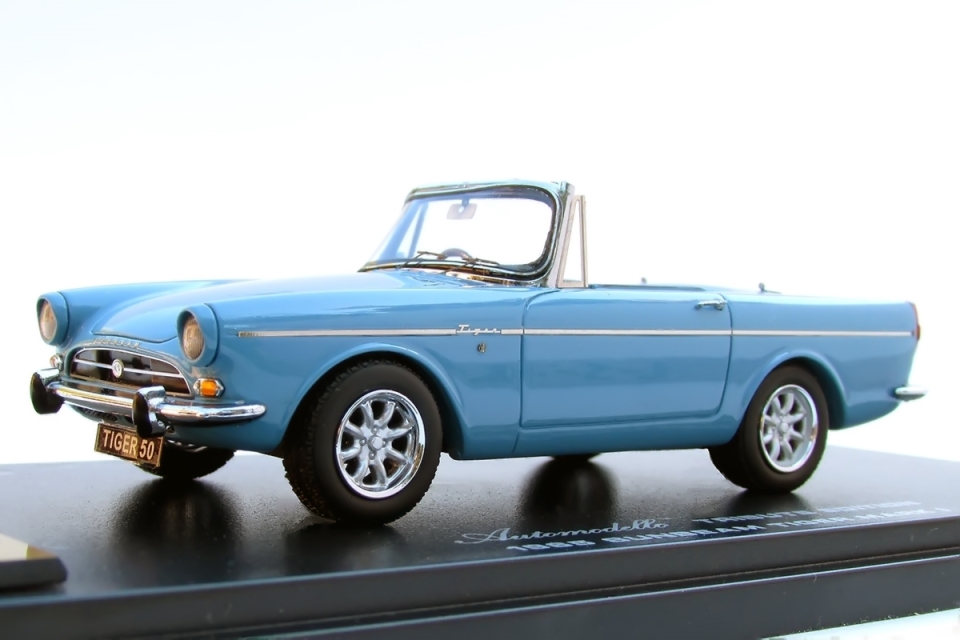
AUTOMODELLO 1965 SUNBEAM TIGER MARK I
“TIGER 50”
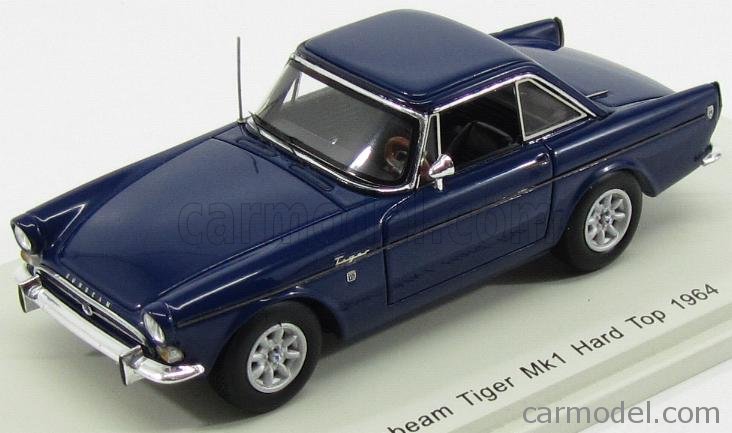
SPARK-MODEL – SUNBEAM – TIGER MKI COUPE HT 1964
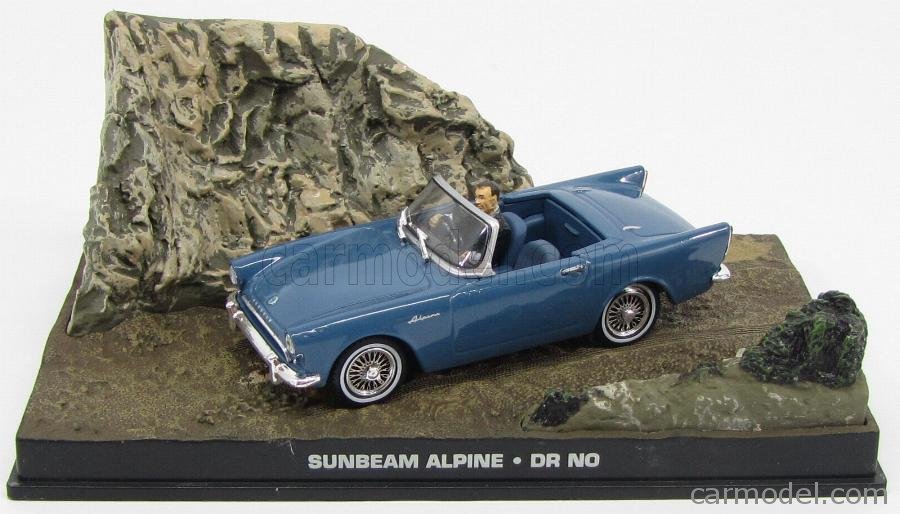
EDICOLA – SUNBEAM – ALPINE SPIDER – 007 JAMES BOND – Dr. NO – LICENZA DI UCCIDERE
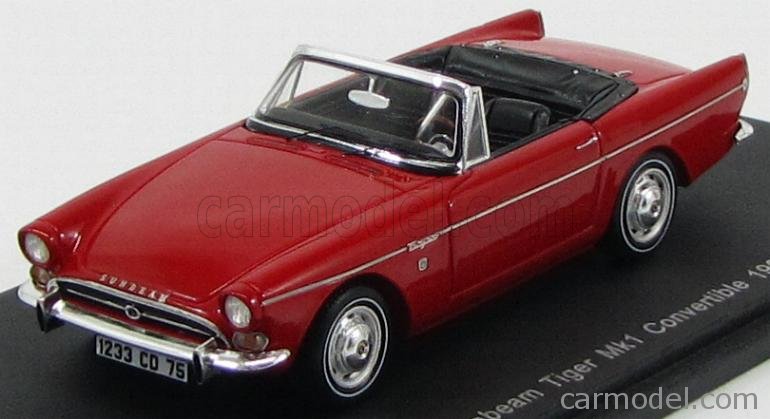
SPARK-MODEL – SUNBEAM – TIGER MKI CONVERTIBLE 1964
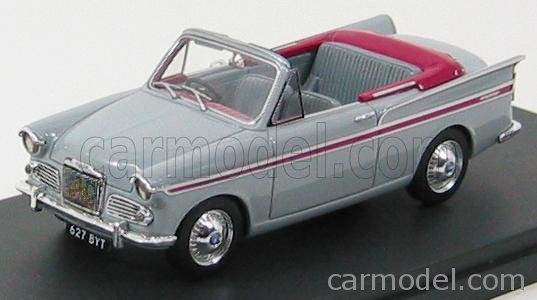
SILAS – SUNBEAM – RAPIER CONVERTIBLE SERIES III 1961
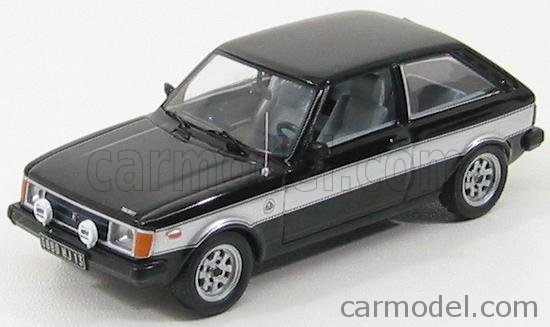
IXO-MODELS – SIMCA TALBOT – SUNBEAM LOTUS PHASE 1 1980
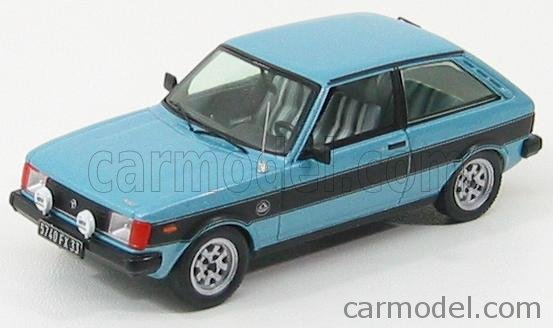
IXO-MODELS – TALBOT – SUNBEAM LOTUS PHASE 2 1982
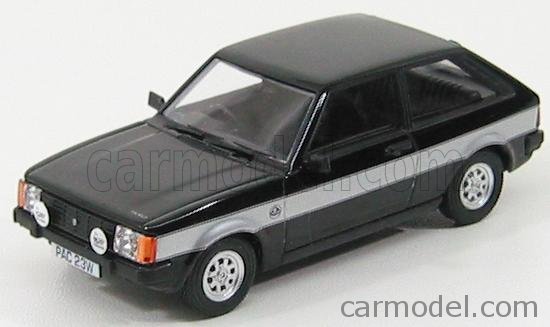
VANGUARDS – TALBOT – SUNBEAM LOTUS
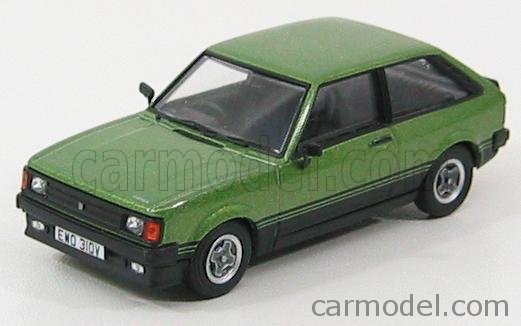
VANGUARDS – SUNBEAM – Ti 1979
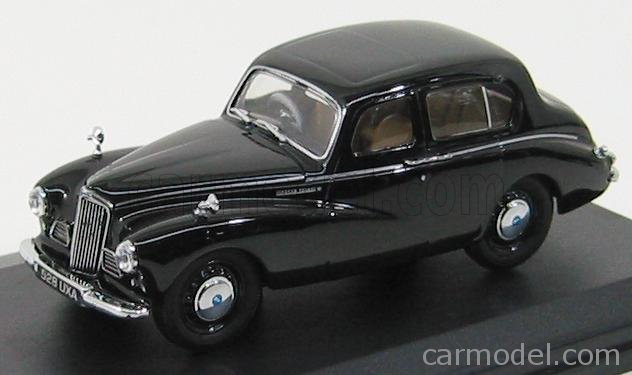
OXFORD-MODELS – SUNBEAM – TALBOT 90 MKII 1948
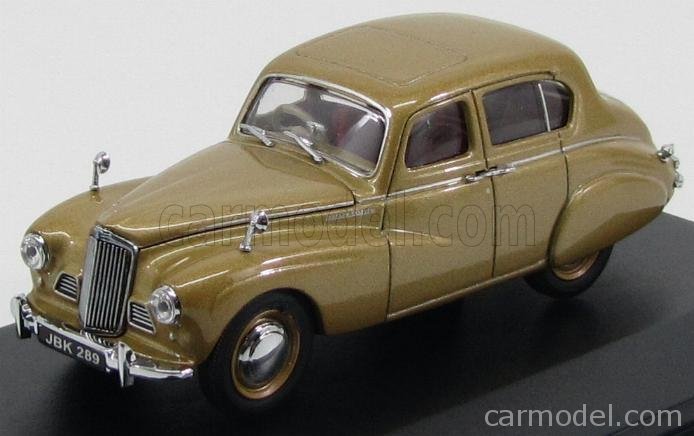
OXFORD-MODELS – SUNBEAM – TALBOT 90 MKII 4-DOOR 1948
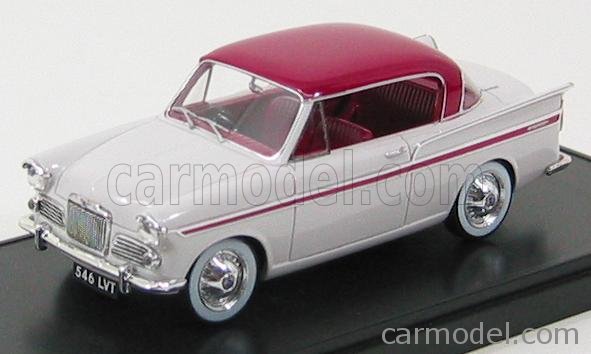
SILAS – SUNBEAM – RAPIER SERIES III 1960
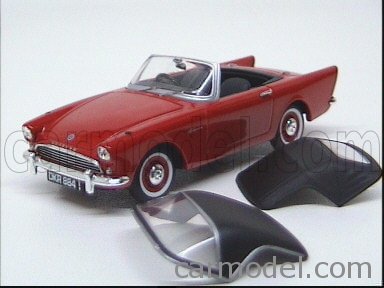
VANGUARDS – SUNBEAM – ALPINE MK II
